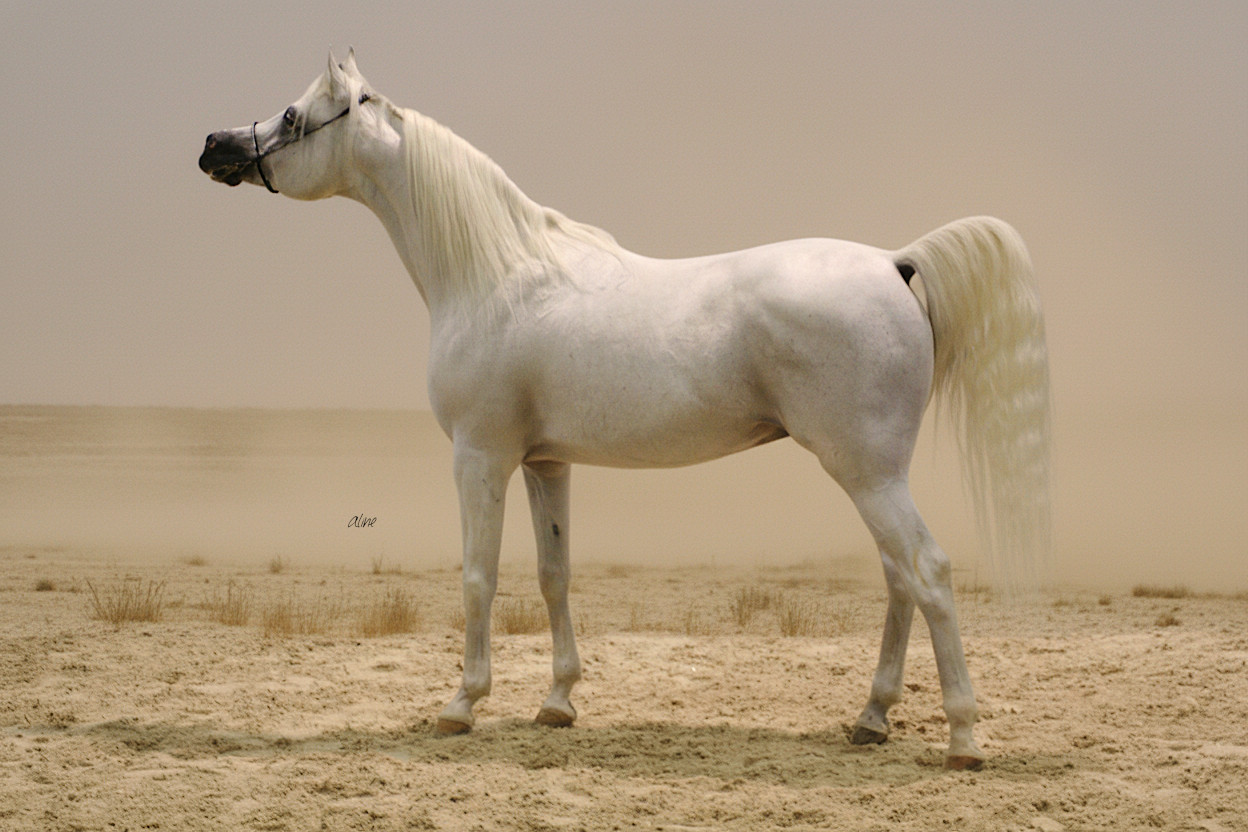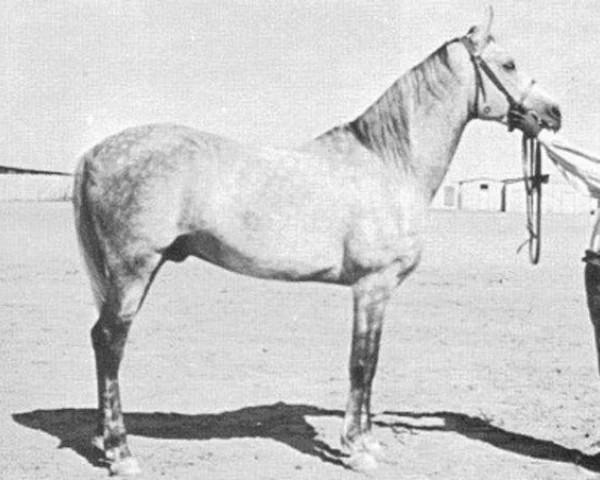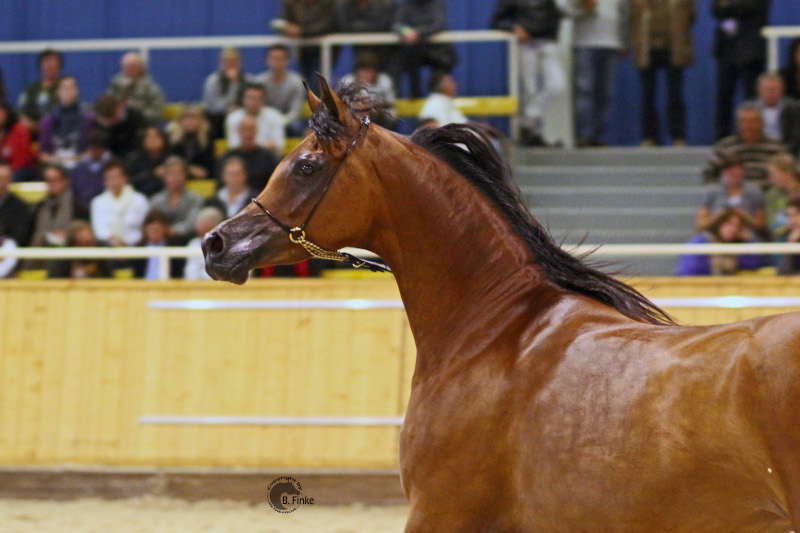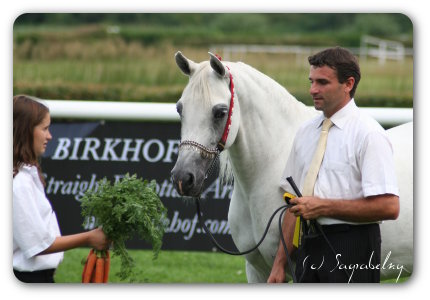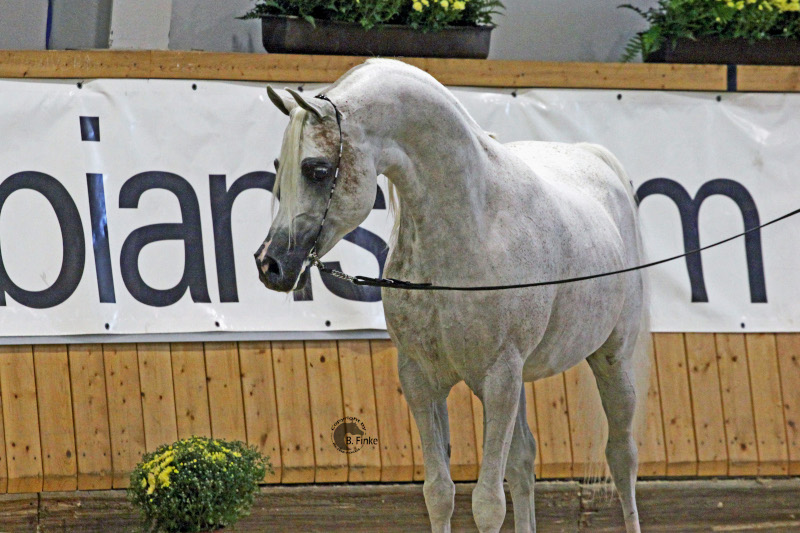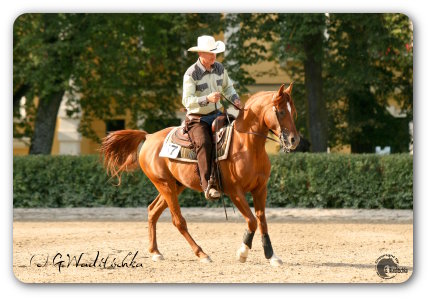Amurath Sahib 
![]()
The grey stallion Amurath Sahib, foaled in 1932 at the Breniow Stud in Poland, was bred by Theresa Raciborska and Tresy Raciborski. Though used selectively during his lifetime, his influence would echo through multiple major breeding programs in Poland, Russia, and Germany. He is remembered as one of the key transmitters of classical Arabian type and function through both male and female lines
Amurath Sahib was sired by 35 Amurath II, born in 1907 at the Radautz State Stud in Austria-Hungary (now Romania). Amurath II was imported to Janów Podlaski in 1918, where he contributed to the early development of the modern Polish Arabian. Amurath Sahib’s dam, Sahiba, was by Nana Sahib I and out of Donka, a mare tracing to 39 Nedjme, a desert-bred mare imported to Bábolna in the 19th century.
In 1939, Amurath Sahib was incorporated into the breeding program at Janów Podlaski, just prior to the disruptions of World War II. Despite the turmoil, he survived and became one of the few pre-war sires still available to Polish breeders in the postwar years. Though used with restraint, the quality of his progeny secured his place as a foundation sire in postwar Polish Arabian breeding. His offspring generally inherited his strong frame, though some lacked the desired type and dryness and tended to be slightly long in the loin. Nevertheless, his daughters proved to be outstanding broodmares..
Among his most important daughters was the mare Balalajka, out of Iwonka III. Balalajka became the dam of the beautiful mare Bandola and Bask, who was exported to the United States in 1963 and transformed Arabian breeding in North America. Balalajka passed on Amurath Sahib’s elegance and genetic depth, and her descendants remain influential in both show and performance circles.
Another daughter, Amneris, also played a central role in Polish breeding, contributing to the breeding program by her daughter Armenia and especially by her sons Aramus and Aquinor; latter one sired Swedish National Champion Exelsjor, Canadian Reserve National Champion Eleuzis and US National Champions Elkana and Elkin. Her son Aramus was exported to the United States where he became an excellent sire and US and Canadian National Champion Stallion in 1970 . In 1972 he was named US National Champion Formal Driving .
Among his sons, Equifor and Arax stood out. Equifor remained in Poland and contributed to the reconstruction of the national herds. Arax, out of Angara, was exported to the Russia, where he sired Nabeg, sire of many influential stallions like Menes, Neman, Nadejni, Nariadni, Ptersk, Princip, Prononce, Peleng and Tallin. Thus Arax became foundational in the Russian Tersk breeding program. Through this line, Amurath Sahib’s genetic legacy reached stallions such as European Champion Stallion Balaton and World Champion Stallion Kubinec.
Through his son Gwarny (x Gwara), Amurath Sahib also influenced German breeding. Gwarny sired Pasat who was the sire of Penthagonn. Penthagonn produced the stallion Pamir I. Pamir I became part of the German National Stud at Marbach. Pamir I introduced classic Polish traits into Marbach’s performance-oriented Arabian herd, continuing Amurath Sahib’s legacy into the state program. The latest addition to this line at Marbach is the Pamir I grandson WM Devdas, born in 2016, who has already left his footstep in the Trakehner breeding.
Genetic testing conducted in the late 2010s suggested that the stallion Doktryner (out of Gwara) was likely sired by Amurath Sahib, rather than his recorded sire, Miecznik. As a result, all of Doktryner’s male descendants would carry forward the sire line of Amurath Sahib, further strengthening and continuing this influential lineage within Arabian horse breeding.
Amurath Sahib - who was considered as a tall stallion, with excellent top line, dry and refined head and correct legs - died in 1952, having lived two decades and sired a significant number of influential offspring. His impact is found in major branches of Polish, Russian, and German Arabian breeding and serves as a case study in how strategic use of a single stallion can shape a breed for generations.
Info
| grey stallion | |
| foaled: 1932-03-13 | died: 1952-07-17 |
| sire: 35 AMURATH II | sireline: Bairactar db (via Amurath Weil) |
| dam: SAHIBA 1924 | damline: Nejdme db (branch: Sahiba 1924) |
| strain: Saklawi Nedjme | |
| additional information: Blue Catalogue/Raswan Index RI-594 | |
| Breeder: Theresa Raciborska & Tresy Raciborski Breniow Stud Poland | |


